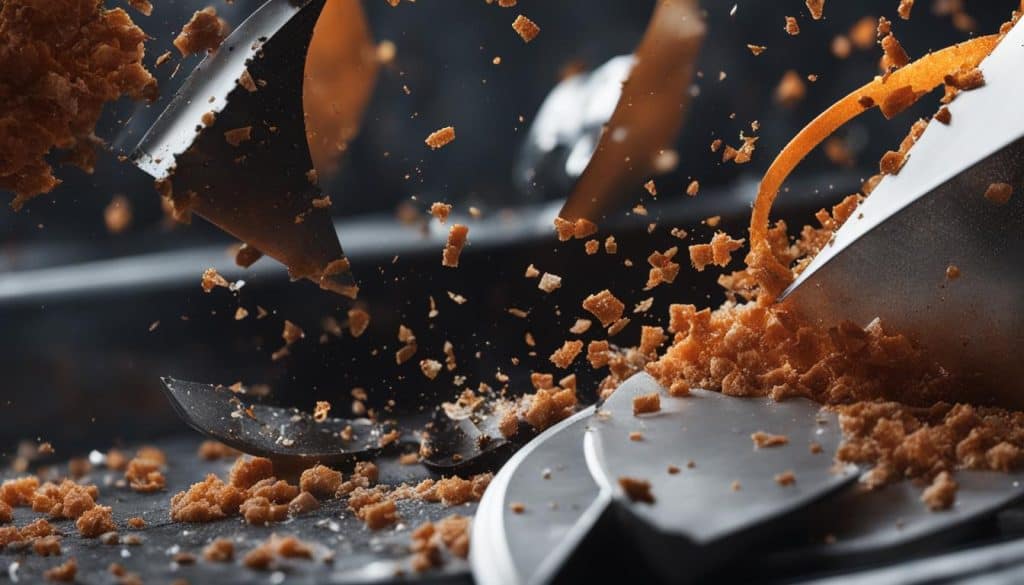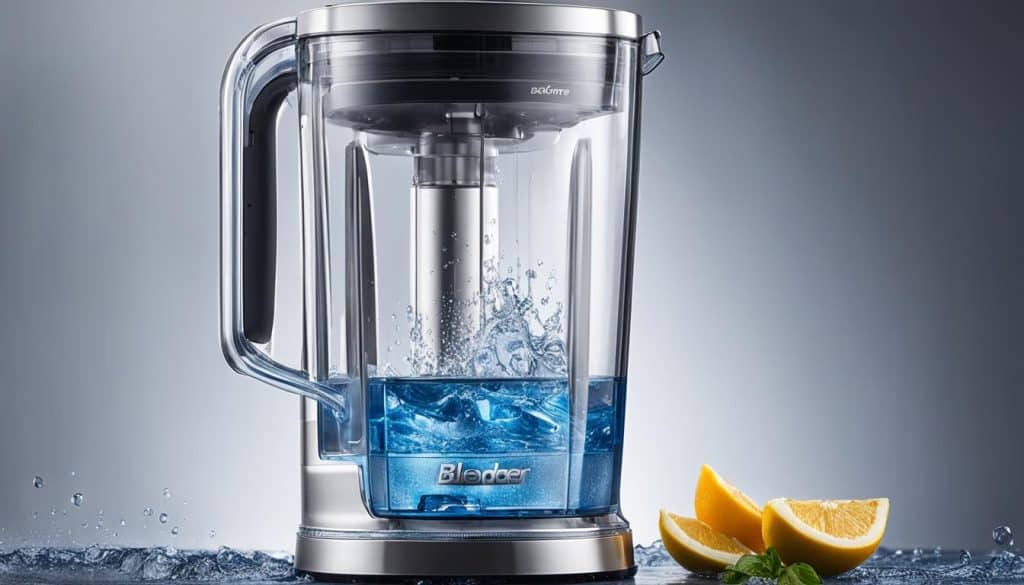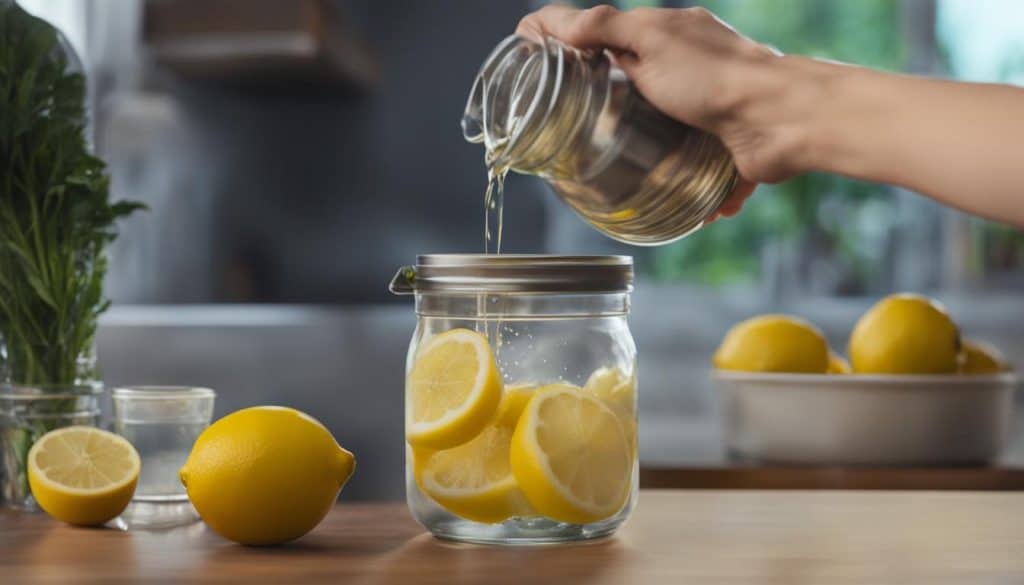Keeping your blender clean is essential for healthy and hygienic food preparation. But figuring out the best cleaning methods for blender jars and blades can be confusing for any home cook. Here are some tips and tricks to make your blender cleaning a breeze.
First, let’s talk blender blades and jars. If you’re looking for an effortless cleaning experience, it’s essential to consider detachable blades and wide-mouth jars. These features can make a significant difference in keeping your blender sparkling clean.
T oughout this article, we’ll cover various methods and techniques to ensure a thorough clean for your blender blades and jars. Keep reading to discover how to keep your kitchen appliance in its prime working condition.
1. Finding the Right Blender for Easy Cleaning
When it comes to blender cleaning, finding a model that makes disassembly a breeze is key. Look for blades that detach easily with a simple twist or click, as these will save you time and effort in the long run.
To further simplify the process, choose blenders with wide-mouthed jars that offer easy access to every nook and cranny for deep cleaning.
On the opposite end of the spectrum, narrow necks and intricate ridges can trap food remnants, making thorough cleaning a challenge. To avoid this issue, prioritize blenders with wide openings and simple designs that enable quick and efficient cleaning.
It’s important to consider these factors when shopping for a blender to ensure you invest in a model that offers disassembly ease and jar access for effortless maintenance.
Blender Cleaning Difficulty Chart
| Blender Model | Blade Detachment | Jar Access |
|---|---|---|
| Vitamix 5200 | No, requires unscrewing and specific tools | Narrow neck, difficult to reach corners |
| Ninja BL660 | Quick-release mechanism | Wide-mouth jar, easy to clean |
| Hamilton Beach 58149 | Twist and click mechanism | Standard mouth jar, some hidden corners |
Note: These ratings are subjective and based on personal experience.
2. Prioritizing Blade Sharpness for Easy Cleaning
Did you know that having sharp blades is not only important for the performance of your blender, but also for its ease of cleaning?
Dull blades won’t properly break down food, leaving chunks and residue clinging to the edges. This build-up can be frustrating to clean and could even lead to bacteria growth.
By prioritizing blade sharpness, you’ll not only achieve smoother blends but also easier cleaning!

To keep your blades sharp, regularly sharpen them with a sharpening stone or take them to a professional. You can also prevent dullness by avoiding blending tough items like ice or frozen fruit for prolonged periods.
A well-sharpened blade can also save time in the long run. You won’t need to spend as much time scrubbing your blades or soaking them in a cleaning solution.
3. Dishwasher Compatibility and Cleaning Efficiency
When it comes to cleaning your blender, your dishwasher can be your best friend. Check if your blender’s jar and blade are dishwasher safe to save you time and effort.
But be cautious of high-temperature cycles that can damage plastics or warp seals. For parts that aren’t dishwasher safe, handwashing might be necessary.
If you’re not sure if your blender is dishwasher compatible, consult your blender manual or contact the manufacturer to avoid any accidental damage. The last thing you want is to make your blender uncleanable.
4. Effective Handwashing Techniques
Handwashing is an essential part of keeping your blender clean and sanitary. Using warm soapy water and a soft sponge or brush can help ensure you don’t scratch the plastic.
When handwashing your blender, pay special attention to the blade base and around the gasket, where food particles tend to hide.
For an even more effective clean, consider using a dedicated brush to reach those tough spots. Just make sure it’s soft bristled to avoid scratching the plastic
If you’re unsure about the best handwashing techniques for your blender, consult the user manual for guidance. It may offer specific instructions for your particular model.

5. Power Rinsing for Stubborn Stains
Got some stubborn residue that won’t budge? Try rinsing it out! For tough stains stuck under the blades, a strong water stream from the faucet or a spray bottle can do wonders. Aim the water directly at the affected area and watch as the debris is swept away.
For even stronger cleaning power, try soaking the disassembled parts in soapy water for a few minutes before scrubbing. This can help loosen up any stuck-on bits, making it much easier to clean them properly.
Remember, your blender’s performance is only as good as its cleanliness. Investing time in thorough cleaning not only ensures your machine stays looking and operating like new but also protects your health and hygiene in the kitchen!

Maximizing Rinsing Power
For optimal rinsing power, use a high-pressure water source such as a sink sprayer or a pressure washer. Angling the blades’s openings towards the water stream can help flush out any remaining bits.
Be sure to rinse every part, including the lid and gasket. Regular rinsing can prevent food build-up and odors, prolonging the life of your blender!
6. Don’t Forget the Hidden Corners
When it comes to blender cleaning, it’s essential not to overlook any hidden corners. One area that often goes unnoticed is the lid. Over time, gaskets and crevices can harbor bacteria and mold, compromising the hygiene of your blender.
To avoid this, wash and dry the lid thoroughly after each use, making sure to clean all the nooks and crannies. If necessary, replace the gasket to ensure optimal sealing and freshness. Neglecting this step can result in unpleasant odors and even contamination.
7. Deodorizing Tricks for a Fresh Blender
No one wants their fresh smoothie to taste like garlic or onions from the previous recipe. If lingering odors plague your blender, try natural solutions like baking soda or diluted vinegar. Leave them sitting in the jar for a while before washing to absorb unwanted smells.
Another option is to blend a solution of equal parts water and lemon juice for a refreshing blend that also disinfects your blender. Rinse thoroughly afterward to remove any residue.

Regular deodorizing of your blender will keep it smelling fresh and inviting for your next culinary creation.
8. The Importance of Regular Maintenance
Keeping your blender clean with regular maintenance is key to its longevity and performance. Neglecting to clean your blender can lead to build-up, unpleasant odors, and even mold growth. Follow these simple tips to ensure your blender continues to blend smoothly:
- Immediately clean your blender after each use: Don’t wait until later to clean your blender. Rinse the jar and blades with hot soapy water to remove any residue.
- Pay extra attention to oily and sticky blends: After blending oily or sticky ingredients like peanut butter or banana, take extra care to clean the blades and jar thoroughly. These ingredients can leave behind residue that is tough to remove.
- Disassemble the blender: For a deeper clean, disassemble the blender and clean each piece separately. Pay special attention to the blade base and gasket, which tend to accumulate residue.
- Consider dishwasher compatibility: If your blender’s jar and blade are dishwasher safe, take advantage of the convenience. Be sure to check the manual for temperature limitations to avoid damaging the plastic or warping the seals.
Don’t let laziness get the best of you. Regular maintenance is simple and prevents unwanted issues down the road.
9. Utilizing Your Blender’s Manual for Effective Cleaning
Your blender’s manual is a treasure trove of information, and it can be a valuable resource for cleaning your appliance. Most blender manuals include specific cleaning instructions and tips for your particular model, ensuring you’re cleaning it effectively and safely.
Following the manufacturer’s guidelines will also help you avoid any potential damage to your blender.
Start by locating the section on cleaning and maintenance. Depending on the model, this section may include step-by-step instructions for disassembling the blender, cleaning each part, and reassembling the appliance.
If you don’t have a physical copy of the manual, you might be able to find it online on the manufacturer’s website.
Pay close attention to any warnings or precautions listed in the manual. Some blenders have specific cleaning requirements, and improper cleaning methods could damage the appliance or void the warranty.
For example, some components may not be dishwasher safe, or the manual may recommend avoiding certain cleaners or scrubbers.
The manual might also offer tips and tricks for effective cleaning. For instance, it could suggest using a soft-bristled brush for scrubbing or soaking the blades in warm water to help loosen stubborn residue.
It might also recommend using specific cleaning solutions or techniques to address common issues like staining or odors.
Make sure to keep your blender manual in a safe place so you can refer to it whenever you need to clean your appliance.
By following the manufacturer’s guidelines, you can ensure a long lifespan, optimal performance, and easy maintenance of your blender. That manual is like magic for keeping your blender sparkling clean!


